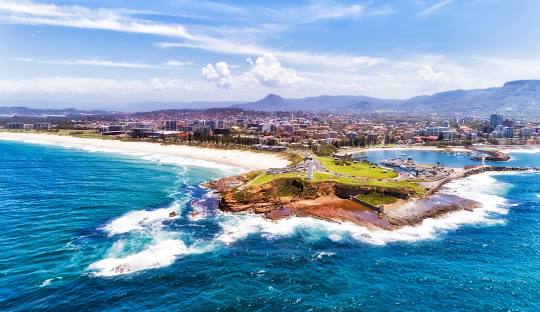
Wollongong’s Comprehensive Transport Network: Roads, Rail, Air, and Sea
Posted by on
Wollongong boasts a well-developed transport network that facilitates easy access to the city and beyond. Whether traveling by road, rail, air, or sea, the city is well-connected to regional and national hubs.
Road
The M1 Princes Motorway (formerly the F6) is the primary road connection to Wollongong. This motorway, part of the National Route 1, connects the city to Sydney and other destinations to the north and south. The road descends from the Illawarra Escarpment via Mount Ousley Road, entering the city near the University of Wollongong. To the north, Memorial Drive links the northern suburbs and continues to Bulli Pass, where travelers can merge onto the M1 towards Sydney or the B69 toward Campbelltown. The Illawarra Highway links Wollongong's southern suburbs to the Southern Highlands via Macquarie Pass.
One iconic structure on this route is the Sea Cliff Bridge, which bypasses a dangerous section of the Illawarra Escarpment and offers stunning views along Lawrence Hargrave Drive.
Rail
Wollongong is served by the Illawarra railway line, with Wollongong railway station as the main hub. This line connects Nowra and Kiama in the south to Sydney in the north. A branch line also serves suburbs between the CBD and Port Kembla. Freight services connecting Sydney markets with Port Kembla and other industrial areas are an essential part of the city's transport infrastructure, bypassing the congestion of Sydney's rail network.
Bus
Wollongong's bus services are operated by Premier Illawarra and Dion's Bus Service, providing public transportation and school/charter services. The Wollongong railway station is the central hub of the bus network, with additional interchanges at Wollongong University. Buses connect various suburbs to destinations such as Shellharbour City Centre, Port Kembla, and Campbelltown in Western Sydney. A free shuttle bus service connects the CBD, University of Wollongong, and suburbs like North Wollongong, Fairy Meadow, and Gwynneville, operating similarly to a tram system.
Air
Wollongong is serviced by Shellharbour Airport, located 18 km south of the city center in Albion Park Rail, within the Shellharbour City local government area. The airport is an important hub for regional air services, with flights operated by Fly Corporate to Melbourne (Essendon) and Brisbane. The airport also supports various air charter businesses, including NSW Air, EliteJet, and Touchdown Helicopters. Additionally, the Historical Aircraft Restoration Society (HARS) is based at the airport, preserving Australia’s aviation heritage.
Port
Wollongong's Port Kembla Harbour is a crucial export point, especially for coal mined in the southern and western regions of New South Wales. The port has undergone significant upgrades to support a growing demand for logistics services, with new infrastructure, including a Maritime Office, being developed. In addition to coal, the port handles grain, shipping containers, and other goods. A gas export terminal is under development as of 2020, further enhancing the port’s capacity. As of 2023, the port is also seen as a potential location to homeport the future Australian Naval Fleet.
Together, these transport systems provide Wollongong with efficient access to critical markets and destinations, ensuring the city remains well-connected to the rest of New South Wales and beyond.